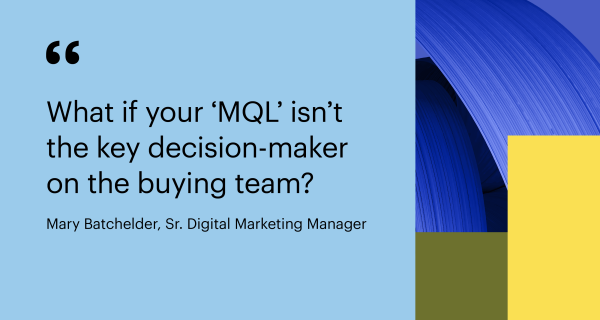Whether you’re building a house, a car, or even Ikea furniture, you’ll need a few tools to get the job done. The same applies to any successful B2B marketing strategy. To execute on it effectively, you’ll need the right marketing technology tools, also known as your martech stack.
However, the key to success isn’t just investing in tools, it’s about strategically setting up your tools in a way that they talk to each other and work together smoothly. When integrating martech tools, it’s all about ensuring that your team can work smarter, not harder. Marketers use more than 12 different tools on average. Such an abundance of tools can be a challenge to manage, integrate, and scale.
In this complex environment, a pivotal question emerges: How can businesses make sure their marketing tools work well together and are easy to manage and grow as the business expands?
The holy grail of succeeding is following the integration strategy where it’s a holistic ecosystem of every tool integrating with everything else that is around it (think solar system). This is like 90% of your success.
Nadia Davis, Director of Revenue Marketing, PayIt
Understanding the modern B2B marketer’s tech stack
What is a martech stack?
A martech stack (short for marketing technology stack), is a comprehensive collection of various software tools and technologies that marketers and businesses use to plan, execute, manage, analyze, and optimize their marketing efforts and strategies. It allows businesses to centralize data, automate processes, gain insights into customer behavior, monitor the competition, and tailor marketing campaigns to specific target audiences.
A well-constructed martech stack is essential for modern marketing operations, as it helps businesses stay competitive and adapt to the ever-evolving digital marketing landscape.
What tools should be in your martech stack?
The tools in your martech stack need to be tailored to your specific organization and strategically chosen, so you are confident your investments will set you up for success. For example, let’s look at a small startup vs a large established enterprise. Say the small startup we’re looking at has limited resources, and aims to establish an online presence, generate leads, and track basic website analytics. They might look for a single marketing tool that offers lighter version of each of these functions, that has a user-friendly interface, is cost-effective, and has essential features tailored for startups.
On the other hand, the established enterprise has a comprehensive marketing strategy involving multi-channel campaigns, multiple functional and technical departments, personalized customer experiences, and in-depth data analysis. They might look for an integrated set of marketing tools that offer advanced features such as AI-driven customer segmentation, real-time campaign optimization, and detailed ROI analysis. With a larger team and more complex goals, the enterprise organization would benefit from a sophisticated and scalable tool.
There are a few common tools that every marketer should consider adding to their tech stack. These include:
- Customer relationship management platforms (CRM)
CRM systems centralize your customer and prospect data, enabling targeted campaigns and personalized communication.
- Marketing automation platform (MAP)
Marketing automation platforms streamline and scale your marketing efforts. These systems automate repetitive tasks such as email campaigns, lead nurturing, and social media posting, saving time and ensuring consistency. Additionally, they offer data-driven insights, enabling optimization of marketing strategies for improved efficiency and effectiveness.
- Content management systems (CMS)
Content management systems empower efficient content creation, organization, and distribution. They enable marketers to easily manage and update website content, blogs, and other digital assets, ensuring consistency and relevance.
- Account-based marketing (ABM)
Account-based marketing software enables highly targeted B2B marketing strategies. ABM platforms facilitate the identification of high-value accounts and decision-makers within those accounts, allowing marketers to deliver personalized content and messaging. ABM drives more meaningful interactions, accelerates the sales cycle, and enhances alignment between marketing and sales teams.
- Generative AI
Gen AI is on the rise among B2B marketers. In fact, 89% of IT decision-makers are either researching or using AI technology. Gen AI tools empower marketers by automating content creation, enabling personalized communication, analyzing vast datasets for valuable insights, and more.
- Intent data
Perhaps one of the most important components to your martech stack, is intent data. Incorporating intent data into your martech stack is essential as it provides valuable insights into potential customers’ buying behavior and interests.
The data integration problem
What’s the point of having all these tools if they can’t work or communicate with one another?
However, 52% of marketers say martech stack integration is the most challenging barrier to harnessing marketing technology trends. With so many tools, utilizing integrations to their fullest extent and connecting your data is easier said than done.
Not properly integrating contact information across your martech systems can cause an array of challenges such as:
- Underutilization of expensive integrations
- Marketing and sales silos
- Issues with data quality/standardization
- Difficulty measuring ROI
The key to properly utilizing the entirety of your tech stack lies in successful data integration. When done right, it unlocks the full potential of your martech stack, paving the way for cohesive, efficient, and insightful marketing strategies. It’s not just about having the tools; it’s about making them work together, ensuring that your investment translates into tangible results and meaningful insights.
Let’s say a SaaS software company is faced with the challenge of enhancing their customer experience across various touchpoints. They have a robust martech stack, including CRM software, email marketing tools, social media analytics, and customer support tools. Individually, these tools provided valuable insights, but that’s the problem – they’re siloed. These siloed tools have led to issues in communication among their marketing and sales teams, struggles with understanding insights, and inaccurate measurements of ROI.
Their solution? Placing focus on linking customer information across all tools and systems and creating a unified view of each customer. Analyzing integrated data allows them to optimize their strategies, resulting in increased sales, higher customer satisfaction, and measurable ROI. Successful integration transformed their martech stack into a powerful tool for efficient, insightful, and cohesive marketing strategies.
How is this integration accomplished?
Integrating your martech systems and data
How can you properly integrate your martech systems and ensure a seamless data flow? Whether you’re expanding your existing tech stack or evaluating new tools, there are key steps to follow.
1. Align your goals
Before making any purchase, align your decisions with your long-term strategy. Avoid impulse buys and quick fixes, because often, shiny new software is just that – exciting new toys that will go on the back burner in a few months if they don’t make an impact on your goals, processes, or efficiency, or if they are a hassle to cross-communicate with your existing tech.
Engage both marketing and sales teams to establish clear goals, and to determine if a new tool fits into your existing processes and contributes meaningfully to your objectives. Aligning goals from the get-go will allow for better collaboration throughout the implementation and integration processes.
2. Audit your current tech stack/processes
Is your current tech stack delivering as expected? Is data connected between marketing functions, and between marketing and sales? To truly perform a comprehensive audit, involve multiple areas of your business in the audit like marketing, sales, customer success, and product. Ask critical questions:
- Are your systems working efficiently?
- Is the data reaching where it needs to be?
- Is there a well-defined process for transferring marketing leads to the sales team?
- Is there a system for sales to provide feedback on lead quality and customer interactions to marketing?
- Is anything missing or a pain to find when you need it?
When expanding your tech stack or evaluating new tools, prioritize platforms that support the integration and analysis of cross-functional and cross-channel information. Ensure that these tools can communicate valuable insights for your marketing strategies.
3. Map your data strategy
Once you’ve set your goals and audited existing systems, map out a comprehensive data strategy. Visualize how data will move within your organization. Consider the entire journey, from data collection points to storage, processing, usability, and measurement.
Identify the touchpoints where data enters and exists in your system. Understand how different teams interact with this data at various stages. For instance, data collected by the marketing team may need to be integrated with the CRM used by the sales team. Establish robust integration processes that enable the smooth flow of data between different systems. Use APIs and data connectors to link your martech tools, CRM systems, and data warehouses, ensuring that insights are accessible where it’s needed.
Here is an example of what a data map might look like:
| Tool Name | Data Source | Data Destination | Data Flow Description |
| Google Analytics | Website Analytics | Google Ads CRM Marketing Automation | Send conversion data for ad optimization |
| HubSpot | Marketing Automation | CRM | Sync lead data, lead scoring, and email engagement metrics |
| Salesforce | CRM | Marketing Automation | Pass leads and contact info for nurturing and scoring |
| LinkedIn Ads | LinkedIn Ads | CRM | Transfer leads and engagement data for follow-up |
Once you’ve mapped your data strategy, take time every quarter to monitor performance and assess whether the chosen tools and processes are meeting your goals efficiently.
4. Choose the right data vendors
It’s not just about finding vendors; it’s about finding reliable partners. Ensure the data complies with privacy policies, including GDPR and CCPA regulations. Poor-quality data can hinder the integration process and compromise the efficiency of your tech stack. Seamless integration of insights into your martech stack is vital for real-time decision-making. Vendors offering APIs and integration support facilitate the flow of information across your systems, enabling timely and relevant marketing actions.
One source of truth
A well-integrated martech stack serves as the single source of truth for both marketing and sales data. Everyone is reading from the same page of the same book, eliminating confusion and ensuring that decisions are based on unified, accurate information. Key benefits of this include:
- Marketing and sales alignment
Cohesion between marketing and sales strategies leads to a unified approach. Also facilitating personalized and efficient customer interactions, promoting effective lead nurturing and engagement strategies.
- Streamlined workflows
Automated processes that reduce manual interventions and eliminate redundant tasks.
- Enhanced insights
Access to in-depth, actionable insights derived from unified data, enables data-driven decision-making and strategic planning.
- Improved marketing attribution
Enables accurate tracking of marketing efforts, attributing conversions and sales to specific channels and campaigns, providing a clear understanding of return on investment.
Conclusion
Constructing a powerful B2B marketing strategy requires the right tools, thoughtful planning, and seamless integration. Your martech stack isn’t just an assortment of software; it’s a dynamic ecosystem where every tool communicates, collaborates, and contributes to the overarching success of your marketing initiatives.




